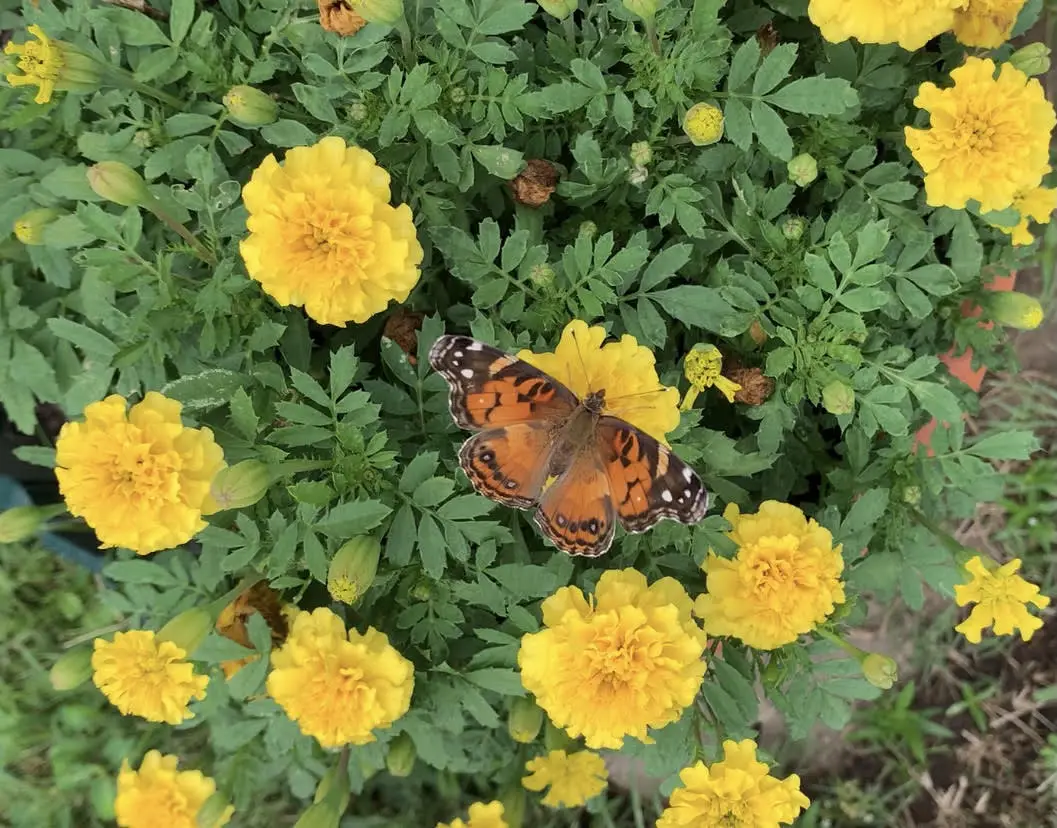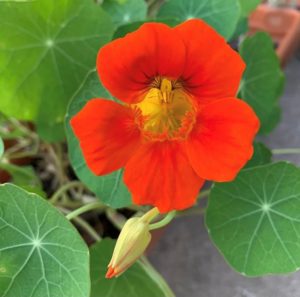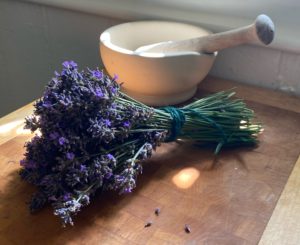Marigolds are one of the easiest flowers to grow. They are perfect for beginner gardeners, although experienced gardeners will love them also. In addition to being easy to grow, they are low maintenance, hardy, and beautiful!
The yellow, gold, orange, or maroon blossoms, show off their warm hues from spring to fall. They attract pollinators, repel certain insects, and can be very beneficial when planted in your vegetable garden. (To learn more about the benefits, check out this helpful article.) Marigolds are annuals but can be grown as perennials in USDA hardiness zones 9, 10, and 11.
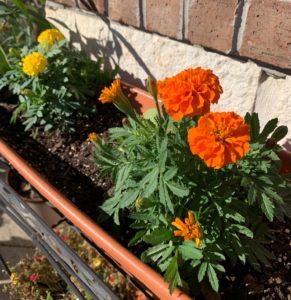
How to Plant Marigolds
You can start with marigold transplants from your local nursery or big box stores, but growing this flower from seed is easy. And because they grow quickly, you will have an abundance in no time.
Direct sow seeds after the danger of frost has passed. You can even plant them as late as August for fall color in warmer hardiness zones. Where you plant them is entirely up to you. Plant them with precision if you are looking to use them for border color or simply scatter seeds in open areas to create a more natural look and feel. Another option is to plant them in containers or hanging baskets to add color wherever it is needed. Regardless of how and where you choose to sow marigold seeds, they will sprout in just a few days in warm, moist soil.
Spacing will depend on the variety, with dwarf varieties requiring a distance of only about 6 to 8 inches (15 to 20 cm). Medium-sized varieties need about 10 to 12 inches (25 to 30 cm) apart, while larger varieties require 18 to 24 inches (45 to 60 cm). The seed packet will provide you with specific planting information for the variety you have chosen.
Sun and Soil
Marigolds require a minimum of six hours of full sunlight but will do better if given eight hours or more. They will grow in partial shade but will not flourish like they do when given more sunlight.
This prolific flower is not picky when it comes to soil and will grow just about anywhere. However, if you want to give them an optimum environment, plant them in well-draining soil with a soil pH of 6.0 to 7.0.

Water and Fertilizer
Marigolds do not require much fertilization beyond the seedling stage. In fact, too much nitrogen can cause an abundance of foliage and fewer blooms.
These garden beauties like moist but not soggy soil. If the first inch of soil dries out a bit in between watering, they will survive, but you may want to consider using a layer of mulch to help the soil retain moisture and lessen the need for watering.
Deadheading
Deadheading, which involves pulling or cutting off the spent blossoms, is not required, but it will encourage more growth. Plus, the plant will look prettier and healthier if you remove the dead flower heads. If you plan on growing marigolds in the same location, you can allow the spent blossoms to fall to the ground, where they will reseed on their own.
This article contains affiliate links. If you make a purchase using one of these links, I will receive a very small commission at no additional cost to you, and it will help me maintain this website. Rest assured, I only recommend products I actually like!
Saving Seeds
It is easy to save marigold seeds. When you deadhead the blossoms, gently pull the petals away from the base to reveal the seeds. You can distinguish them from the rest of the blossom because they are long, thin, pointed, and dark on one end. Be sure they are completely dry before storing them in seed bags and seed packets.

Pests and Diseases
Slugs love marigolds. The easiest way to take care of them is to just pick them off and drop them in a container of soapy water. You can find slugs hiding under the soil, usually along the edges of beds and containers, but they will come out in the early morning and at dusk. If pulling them off by hand does not appeal to you, sprinkle diatomaceous earth (DE) around each plant. DE is a natural product that is abrasive to the slug’s soft tissue. You will need to reapply DE if it gets wet. Others opt for placing a shallow dish or two filled with beer at the soil level. The yeast in the beer is said to attract the slugs. They will crawl in the dish to indulge but will be unable to crawl out.

Spider mites also pose a threat to marigolds. The tiny, almost invisible insects damage plants by sucking the sap out of plant tissue. The upper side of leaves will look stippled with white or yellow spots, while the underside may have small webbing.
Spider mites, like aphids, can be knocked off the plant with a forceful spray of water. Be sure to spray the underside of the leaves where they live. Also, these pests thrive in warm and dry conditions, so it will help to keep the soil moist but not soggy.
Natural predators of spider mites include green lacewings and ladybugs. Cold-pressed neem oil with the naturally occurring compound Azadirachtin, is also an effective organic treatment for these pests. You can learn more about spider mites and how to treat them in this helpful article.
Spittlebugs are also attracted to marigolds, but they pose less of a problem, especially if they are few in number. Like spider mites, a forceful spray of water directed on the nymphs hiding in the spittle should send them packing. If they persist, neem oil is an effective treatment for these sap-sucking insects.
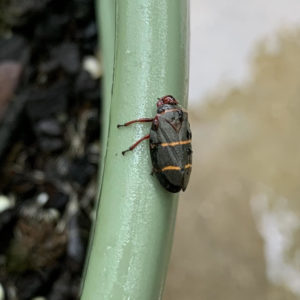
As for diseases, Aster Yellows Phytoplasma is one to look out for. A phytoplasma is a cross between a bacterium and a virus. The disease causes leaves to turn yellow or sometimes red. The phytoplasma is transmitted by tiny aster leafhoppers that suck the sap from an infected plant and then transfer it to another plant via their saliva. Unfortunately, aster yellows cannot be cured, and you will need to remove the infected plant in order to contain the spread. Throw the plant in the trash and do not compost it.
Varieties
French marigolds are one of the most common types of marigolds. They are bushy and, depending on the variety, grow between 6 and 12 inches (15 to 30 cm) tall and spread 5 to 12 inches (12 to 30 cm) wide. They have a reputation for repelling insects and are particularly effective against root knot nematodes. Varieties include Hero, Little Hero, Boy O’ Boy, and Janie.

Aztec marigolds, also known as Mexican marigolds and African marigolds, are much larger than French marigolds, both with regard to blossom size and height. Depending on the type, they can grow 12 to 40 inches (30 to 100 cm) tall. They can also repel insects, and many claim that they also deter larger pests like rabbits and deer. Varieties include Gold Coin, Safari, and French Vanilla, which produce a white or cream colored flower.

Signet marigolds can be distinguished from other marigolds by their unique shape. Although this flower is pretty, it does not repel insects like the French and Aztec marigolds do. But some claim that they can repel larger pests like deer. Another plus for the Signet type is that they are edible!
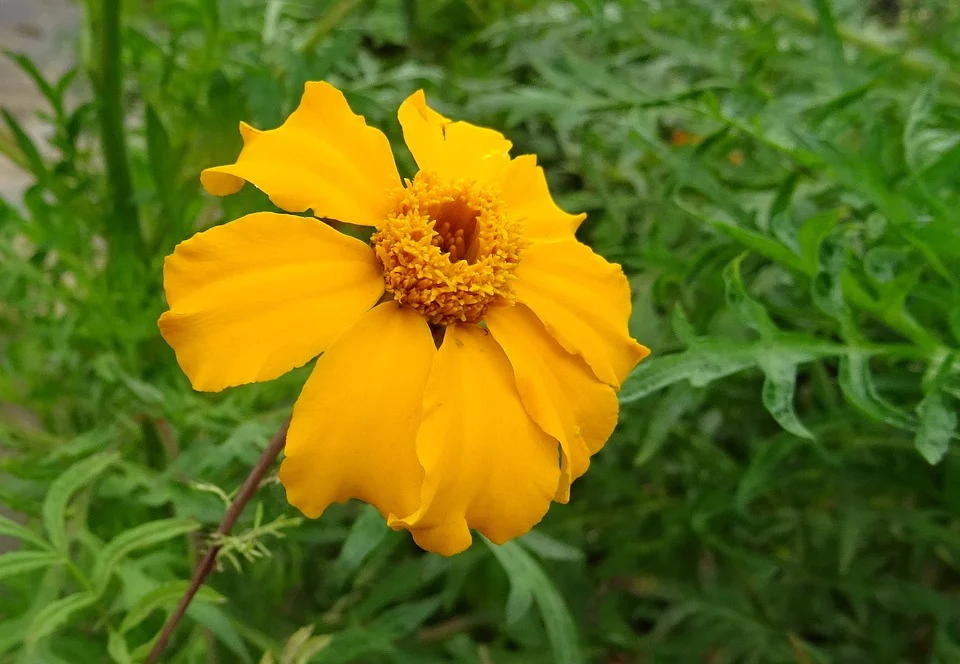
Pot Marigolds, despite their name, are not true marigolds. They are sometimes better known as Calendula. This flower has many uses, including being used as a natural food color substitute. It also has a variety of health applications, and they are edible.

Marigolds are beautiful, hardy, and long-blooming flowers that are easy to grow. They are a great addition to any sized garden.
Thank you for reading this article! If you found it helpful, please consider sharing it with others via email and social media!
